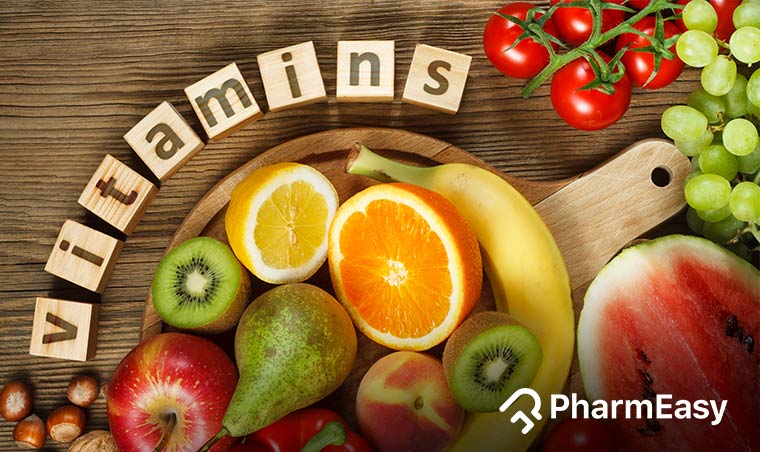
Diabetes patients should eat lots and lots of meat, seafood, eggs and eggs. They should avoid sugar and oil. People who are concerned about the impact of their eating habits on their health should consume a diet rich with fruits, vegetables, and whole grain. Diabetic patients should still eat non-vegetarian food and drink occasionally. These tips will help them choose a healthy diet that suits the way they live.
For diabetics, salt and flour can be problematic. These ingredients can increase blood pressure and add unnecessary calories. You should avoid high sodium foods, but there are still ways to include it in your meal plan. A diabetic diet menu should consist mainly of whole foods. Whole foods are less sodium- and fat-rich than refined sugar. The key is to avoid processed foods.

The ideal diabetic diet menu should have a balanced mixture of carbohydrates, proteins, fat, and fiber. It's important to incorporate healthy fats and carbohydrates in your diet. Balance of all three should be a key part of a diabetic-friendly diet. While fiber and protein slow down the digestion of carbohydrates and provide nutrition, protein will increase your blood sugar levels. If you have been diagnosed with diabetes, it is essential to monitor your food intake closely and keep a proper blood glucose level.
A diabetic diet should be tailored to your child's diet. Carbohydrates can spike blood sugar and are the primary focus of this diet. A diabetic diet should focus on vegetables and fruits, not breads or pasta. Both fruits and vegetables are rich in fibre and antioxidants. Choose whole fruit instead of fruit juices. Fruits after meals should be avoided as they can spike blood sugar.
Insoluble fiber is found in cooked oatmeal, which regulates blood sugar and promotes heart health. Oatmeal is a good source of fiber, which is important for diabetics, as it can lower the insulin intake of the body. Oatmeal is low-calorie and high in fiber, making it an excellent choice for diabetic diets. To reduce your risk of developing type 2, a diabetic diet should include fruits, vegetables, and nuts.

The glycemic index should be used to determine the diabetic diet. This index ranks carbohydrate-containing foods by their effect on blood sugar. A dietitian can help guide you in choosing foods that are right for you. A diabetes diet menu can also be customized to meet your needs and lifestyle. The right nutrition can help you maintain a healthy body while living a diabetic-friendly lifestyle. It's important not to eat too much of anything.
FAQ
What is your favorite workout to build muscle mass?
There are two main things you must do when building muscle mass. These are the isolation exercises as well as compound movements. While isolating exercises target specific muscles, compound movements are designed to focus on multiple muscle groups at once.
The best way to improve your workouts is to choose exercises that challenge all your major muscle groups. This ensures that your sessions are challenging and you are always working hard.
To keep track of what you have done, use an app called MyFitnessPal. It can track everything from calories burnt to weight lifting. It also allows you to create meal plans customized for your goals.
What is the purpose of milk for men?
When you next buy milk, think of other uses. You might also find it helpful to stop drinking coffee.
Both children and adults have been shown to benefit from milk. The nutrients in milk include vitamin D, calcium potassium, phosphorous and magnesium.
It aids in digestion, strengthens bones, and promotes weight loss. Adults who consume dairy products tend to have fewer illnesses and better immune systems.
Milk is also rich in lactose, so people who cannot digest this sugar easily can enjoy its benefits without experiencing stomach problems.
You can drink more milk than you would soda or juice. You can strengthen your teeth with the extra calcium and vitaminD found in milk.
If you don't like the taste of milk, you can always make your yogurt using plain low-fat milk. Yogurt is an excellent alternative to milk because it is lower in calories, and contains more protein.
Yogurt also contains probiotics which improve digestion and immunity.
Try warm milk to help you fall asleep. Warm milk relaxes muscles, increases serotonin levels and helps you get a good night of sleep.
How To Get Rid Of Belly Fat Fast?
There are many ways to quickly reduce belly fat. One method is to eat less and drink lots of water.
A second way to boost your metabolism is by running and swimming.
To quickly reduce belly fat, avoid sitting too much. Stand up often throughout the day. This will help to burn more calories.
If you've tried all the methods and are still struggling with belly fat, there's another option.
This is done by using a device called the belt. It tightens around the waist when you sit.
It will cause you to feel uneasy and make it difficult for you to move. This forces you to burn more calories and reduces your belly fat.
What is a good seven-day workout routine?
A seven-day program should include three days of cardio training (running, biking and swimming), two strength exercise (using free weights or weight machines) and one flexibility/core work out (yoga, Pilates). Each activity should be performed at least once each week. Each session should last no more than 45 minutes.
Cardiovascular Exercise: Running, Biking, Swimming
Your goal is to exercise at least 60 minutes each week. For best results, aim for 75 minutes per week. Cardio exercises can be used to increase blood flow, stimulate muscle growth, and improve blood circulation.
Strength Training
Cardio exercises focus on the heart and lungs while strength training targets muscles and bones. Strength training helps you burn calories even while resting.
Flexibility and core workouts
Core and flexibility exercises are great ways of strengthening your whole body. Both yoga and Pilates can be great choices.
Do I have the obligation to exercise every day or just on occasion?
No! You should do at least 30 mins of moderate-intensity activity 5 days per week. It means you need to exercise hard enough or walk fast enough that you are slightly out-of- breath.
What is the Best Workout for Men Over 40 Years?
The best workout for older men usually increases energy and stamina.
It is important that you note that people over 40 experience a decrease in testosterone levels, which results in lower sex drive.
However, this doesn't mean you cannot still enjoy physical activity. Many studies show that regular aerobic exercise can boost testosterone in some men.
If you are looking to improve your sexual performance, an aerobics workout is the best option.
How to build muscles quickly
Eating healthy foods and lifting weights regularly is the best way to build muscle fast.
It is best to exercise in the morning, when you feel fresh and ready to go!
Try exercises like squats and bench presses.
Use different weight training techniques and drink plenty water throughout the day.
Statistics
- Are You One of the 20% of Guys (mh.co.za)
- By John Thompson Take a whopping 38% off a set of PowerBlock Pros. (menshealth.com)
- 10 pounds in a month is likely during a lean bulking phase, especially for beginners. (muscleandstrength.com)
- An estimated calorie range for moderately active adult males falls between 2,200 to 2,800 calories per day, depending on age. (eatright.org)
- The PRS enabled risk stratification for overall prostate cancer and lethal disease with a four-fold difference between men in the highest and lowest quartiles (HR, 4.32; 95% confidence interval [CI], 3.16-5.89). (pubmed.ncbi.nlm.nih.gov)
External Links
How To
How can I burn fat while exercising?
Exercise reduces calories by increasing metabolism, and oxygen consumption.
If you exercise with moderate intensity, you can safely lose weight.
To burn fat while exercising, follow these tips:
-
Do cardio exercises such as walking, swimming, jogging, cycling, running, or elliptical training.
-
Exercise for 30 minutes three times per week.
-
If you want to lose more weight, add strength training to your routine.
-
Avoid intense training. You can build muscle and not break down muscle tissue.
-
Hydrate well during exercise. Water helps to flush out toxins from the body and maintains proper hydration.
-
Choose low-fat protein shakes after working out. Protein shakes boost energy and repair muscle tissue.
-
You can eat smaller meals throughout the day so that you don't feel hungry in between meals.
-
Don't skip breakfast! Skipping breakfast can leave you feeling tired and sluggish.
-
Take care to your mental well-being. Stressful situations can slow your metabolism.
-
Keep a positive attitude. Studies show that people who believe they're overweight gain more weight than those who think they look pleasing.
-
Get enough sleep. You will have a harder time losing weight if you do not get enough sleep.
-
Keep active. Make sure you get up and move every hour.
-
Maintain a healthy diet. Healthy eating will keep you fuller and more satisfied for longer.
-
Find relaxation methods. A tense mind doesn't allow your body to release stress hormones that break down muscle tissue.
A balanced diet contains all necessary nutrients for growth and development.
You should eat six small meals per day rather than three large ones. This gives your body the time it needs to process what you've eat.
To maintain strong bones, you need to consume 500 mg of calcium each day. Calcium is found in dairy products like yogurt, fortified milk beverages, orange juices, cereals and bread.
Calcium is found in leafy green vegetables and beans, tofu as well as nuts, seeds, cheese, and seeds.
Vitamin D is required for calcium absorption. Vitamin D can also be found in some fortified foods such as eggs, fish, and yolk.
Vitamin E plays an important role in skin health. It's found in vegetable oils, wheat germ oil, peanuts, almonds, sunflower seeds, and corn.
Your body needs zinc for normal immunity function and wound healing. Zinc is found in seafood, oysters legumes meats, whole grains, whole grains and meats.
Zinc deficiency can cause fatigue and loss of appetite. It can also lead to depression and impaired immunity.
Consuming too much sugar can cause insulin resistance. This causes an increase in blood glucose levels. Insulin resistance leads to weight gain.
Insulin resistance occurs when the bloodstream is full of free radicals. Free radicals can be molecules with unpaired electrons that cause damage to cell membranes.
Free radicals come mainly from food additives, pesticides, herbicides, preservatives, smoking, air pollution, radiation, chemicals in cosmetics, lotions, and household cleaning supplies.
Free radical damage may lead to cancer, heart disease diabetes, arthritis, asthma and other conditions.
Eating a well-balanced diet with antioxidants is the best way to prevent free radical damage. Antioxidants protect against oxidative damage.
Vitamin C, beta carotene (found within citrus fruits, carrots, sweet potatoes and spinach), Vitamin E (found inside nuts, olive oils, avocados and eggs), and Vitamin C (found among mangoes.
Additional antioxidant nutrients include selenium and copper, manganese and zinc.
Selenium helps protect cells from oxidative damage caused by free radicals. Selenium can be found in Brazil nuts and liver, kidneys, liver, kidneys, shrimp, cod, turkey and lamb as well as chicken.
Copper protects the brain, eyes, lungs, and red blood cells. Copper can be found in meat, shellfish, meat, and organ meats.
Manganese, an essential component of bone strength, is crucial. Manganese is found in brown rice, spinach, bananas, prunes, raisins, oatmeal, and lentils.
Zinc is required for normal growth, reproduction and wound healing. Zn is found in lean meats, poultry, white fish and eggs.